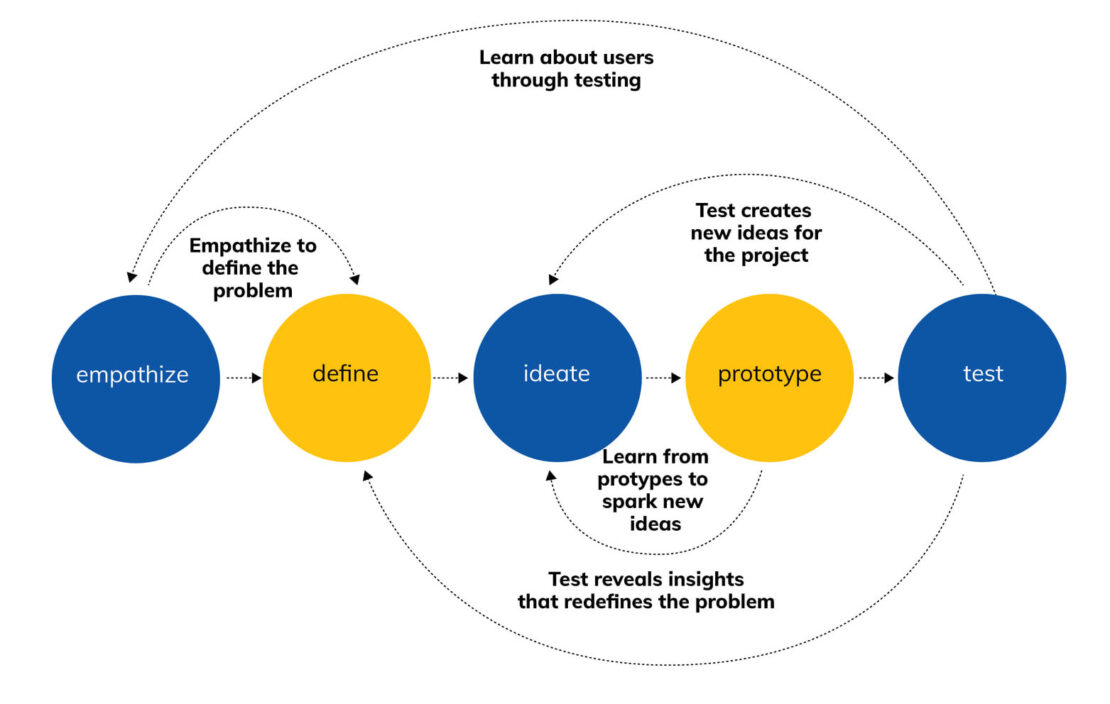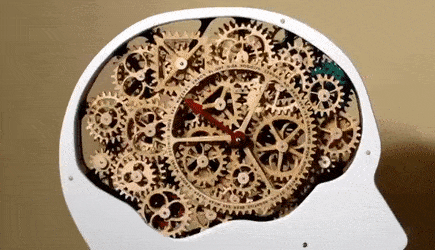
For some time, I’ve been looking for one “source” that curates modern takes on HR Tech, perspectives from the people who build it, and its impact on enterprise — something that’s tailor-made by professionals for decision-makers.
I never found it — so I decided to build it.
Every week, I’ll be sharing fresh insights on tech platforms, design, data, and the future of work — straight to your inbox.
This week, we’re joined by a guest author: Robert Kuang.
My Thoughts
Hello!
My name is Robert Kuang. I’m a consultant at SEI Chicago, where I work with clients primarily on product development, project management, and marketing automation.
I’ve been an Exit Interview reader since its launch, and I’m very excited to be this week’s guest author! In this edition, I will discuss two of my favorite topics and the relationship between the two. We’ll be walking through the fundamentals of design thinking and how to ensure you’re avoiding the most common pitfalls. Then, I’ll share some thoughts on creating a truly cohesive experience by combining design thinking with automation and what the process and pushback may look like in the workplace. If you enjoy this content, I urge you to share your feedback with Patrick, and I’ll happily return for another guest edition to speak more on the subjects!
Design Thinking: A Crash Course
Though many may joke otherwise, design thinking is more than just color-coordinated Post-it notes. In fact, the roots of this theory run much deeper than Post-its, all the way back to the 1960s, when the principles and modern stages of design thinking began to take shape and be utilized in an array of industries.
Shortly after, global design company IDEO entered the scene and became one of the most well-known champions of design thinking. Today, there are five stages, each with its own objectives and challenges:
- Empathize: This first stage is for familiarizing yourself with your end-user: who they are, their problem, their need, their expectations, their behavior, and more. It’s a time for setting assumptions aside and fostering an open-mindedness with which you can approach the rest of the project. In the Empathize stage, participants perform qualitative and quantitative research to gain a holistic understanding of their users in order to better understand and address their problems.
- Define: The Define phase is for synthesizing all the insights discovered during the first stage and developing what’s referred to as a problem statement. Your problem statement offers a clear idea of the problem facing your users and acts as a guiding light through the design thinking process. The most important part of a problem statement is that it should always be user-centric; there should not be any mention of business strategy or organizational goals for solving the user problem.
- Ideate: While the Ideation stage may feel self-explanatory, it is arguably the most nuanced stage and requires purposeful execution to ensure the best ideas aren’t lost. Brainstorming, a buzz session, free-form discussions — there are as many ways to describe it as there are to do it. This is why it’s important to know how the individuals on your team work best so you can choose the most effective creative thinking method.
- Prototype: The Prototype stage is when you finally get to bring the solution to life. The goal of prototyping is to create a scaled-down version of your idea — one that allows you to test the efficacy without investing significant resources.
- Test: The final stage of design thinking is exactly what you’d expect after all your hard work. It’s finally time to let real users interact with your prototype to see if you were successful in solving your problem statement or if it’s time to go back to the drawing board.
More often than not, testing the prototype will reveal an unexpected or unseen pain point, demonstrating an oft-misunderstood principle of design thinking: it is not a linear process. In fact, a well-executed design thinking project will look something like this:

Cohesive Automation
Imagine this: you take public transit to work every morning. It takes 30 minutes to get ready, plus an extra five minutes to walk to the station from your house. The arrival times for the train vary by day, so every night before you go to bed, you have to look at the schedule and set an alarm based on the best option to get to work.
You could continue to do that, or you could use Google’s API for the local train schedule to build an automation that automatically picks the best route to take and sets an alarm to wake you up at the right time. There are other examples, too — ones that are more universal but just as exciting. We all wish there was a way we could start our coffee routine the minute we finally get out of bed. Or start defrosting the chicken for dinner without running home at lunch.
At SEI, we recently completed a project in which we built an automation for our office’s recruiting efforts. Whenever a lead form is submitted for an interview or to learn more about SEI, an email is sent to all consultants involved in recruiting efforts. Whoever is available during the times provided by the candidate can schedule a call with them in a matter of seconds. We’ve completely removed the need to monitor the recruiting inbox or hold separate meetings to coordinate interviews between multiple team members. Best of all, by creating a more streamlined process for ourselves, the candidate’s journey becomes even smoother, too.
Innovations (or perhaps “life hacks”) like these may seem small, but as our lives — at work and home — become increasingly more demanding, automations can prove beneficial by saving us not just time but emotional effort as well. In the workplace, automation that preserves mental and emotional energy could be a much-needed tool in fighting burnout, creating more fulfilling work, and affording managers more time to make meaningful connections with employees.

Leveraging Design Thinking in Digital Transformation
Design thinking is inherently human-centric, making it a powerful catalyst for implementing digital transformation. If you’re ready to bring the two together, you can:
- Demonstrate value with easy wins: Don’t be afraid to start with the low-hanging fruit. In fact, selecting simple objectives for the first few initiatives may help other members of the organization follow the process and grasp the value.
- Underpromise, overdeliver: Be realistic about payoffs and avoid hanging the moon on your first project. Instead, let the growth of the work and the results speak for themselves.
- Document victories, no matter how small: Documenting and publicizing victories with immediate teams and those who may be involved in future projects will be key to starting a new initiative off on the right foot.


